We broke ground today.
The class started with a careful review of what we found on our first day exploring the dig site. Then we plunged into hands-on geometry, a date with our old friend Pythagoras.
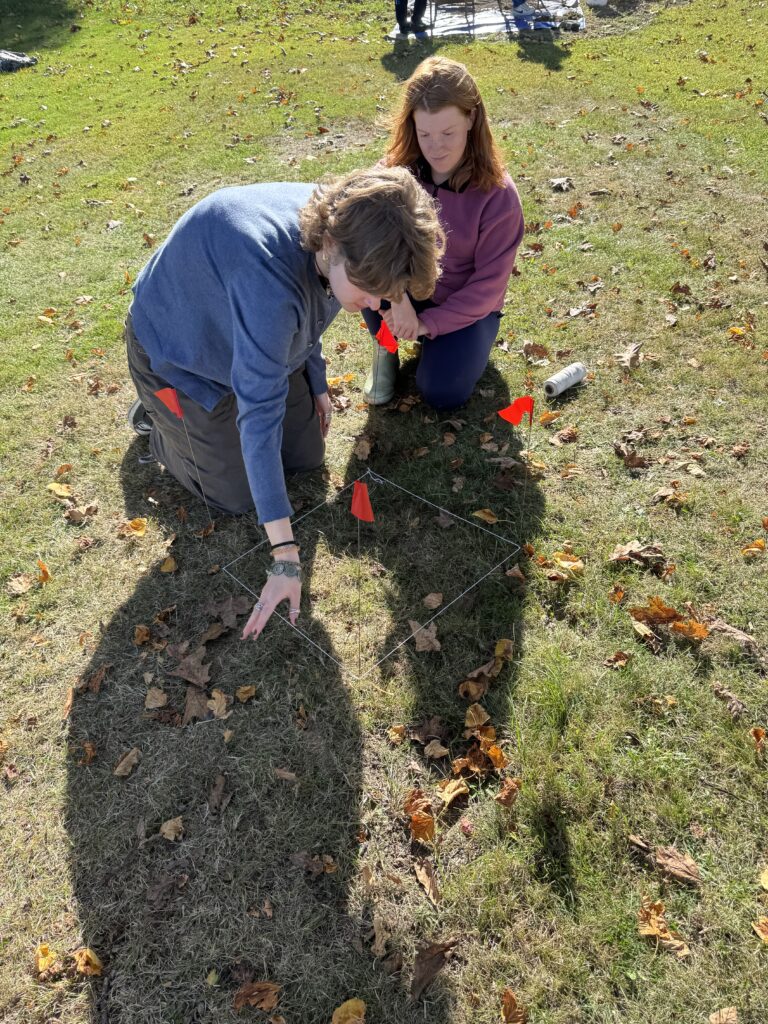
A 50×50 test pit, arranged on a north/south axis needs to be precise. It must be square. You cannot have it sinking off to the left or the right, more rhombus than rectangle. No. You orient your compass, put a stake in the ground, and measure a 50cm line. You put in another stake.
Then things get complicated. Using tape measure number 1, measure another 50cm line. Taking a second tape measure, measure a 70.5cm line that crosses the middle of what will be your pit. Carefully bring the 50cm point on tape measure 1 to touch the one reading 70.5 that crosses the square and you should have a beautiful right angle. Put in a stake. Repeat on the other side.
Measure each of the 50cm sides to make sure they are, in fact, 50 cm. You’ve got a test pit.
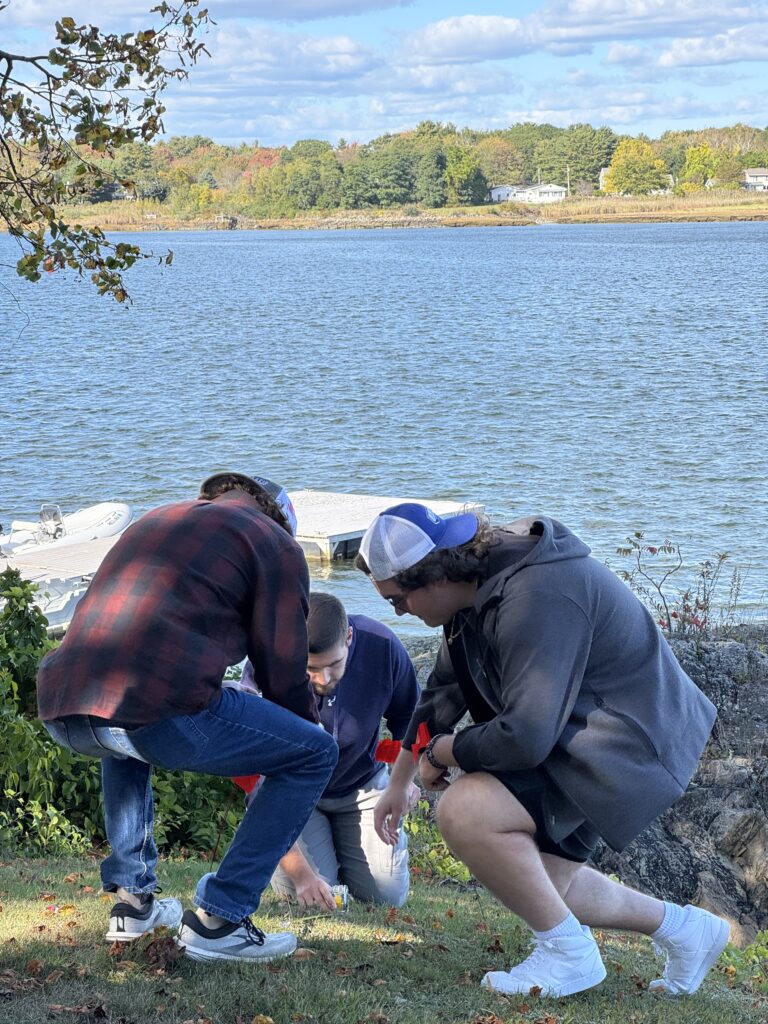
Arthur walked the students through the process. He showed them how to peel back the sod, carefully assuring it came up in a single large piece.
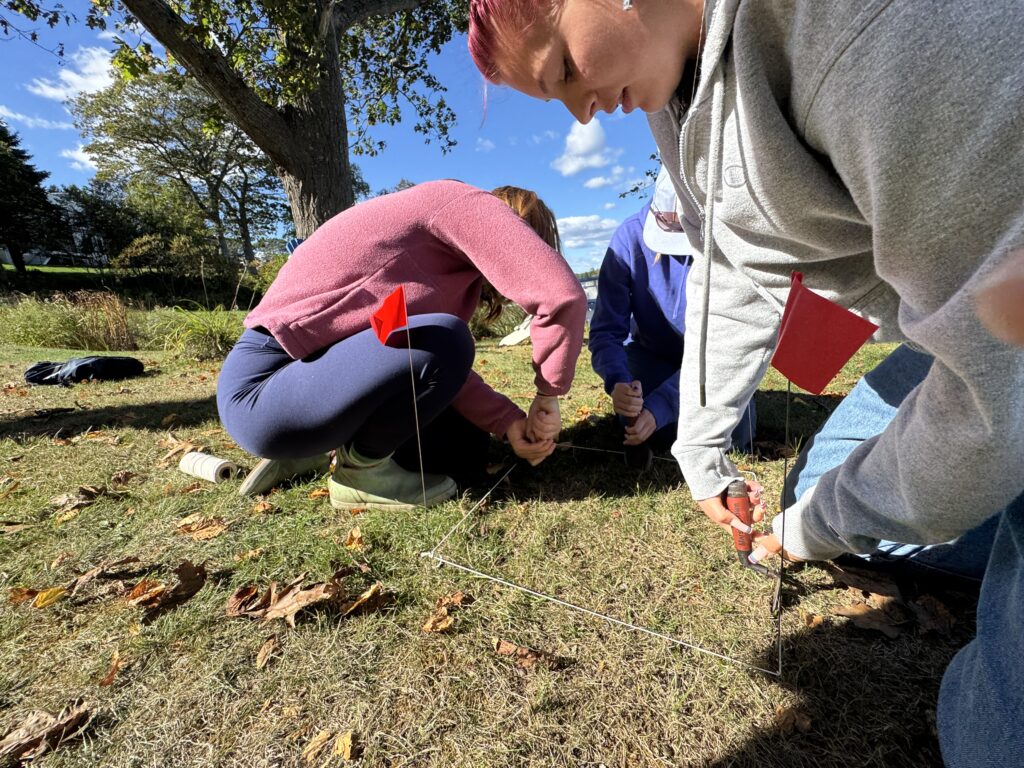
Next, he demonstrated trowel technique. Don’t hold it fully on the handle. There’s more control if you grip the bit of metal just above the blade. Now scrape. Collect the soil in buckets. Sift it. Discover that the wind is really pretty strong. Inhale much of the dirt you just sifted. Repeat.
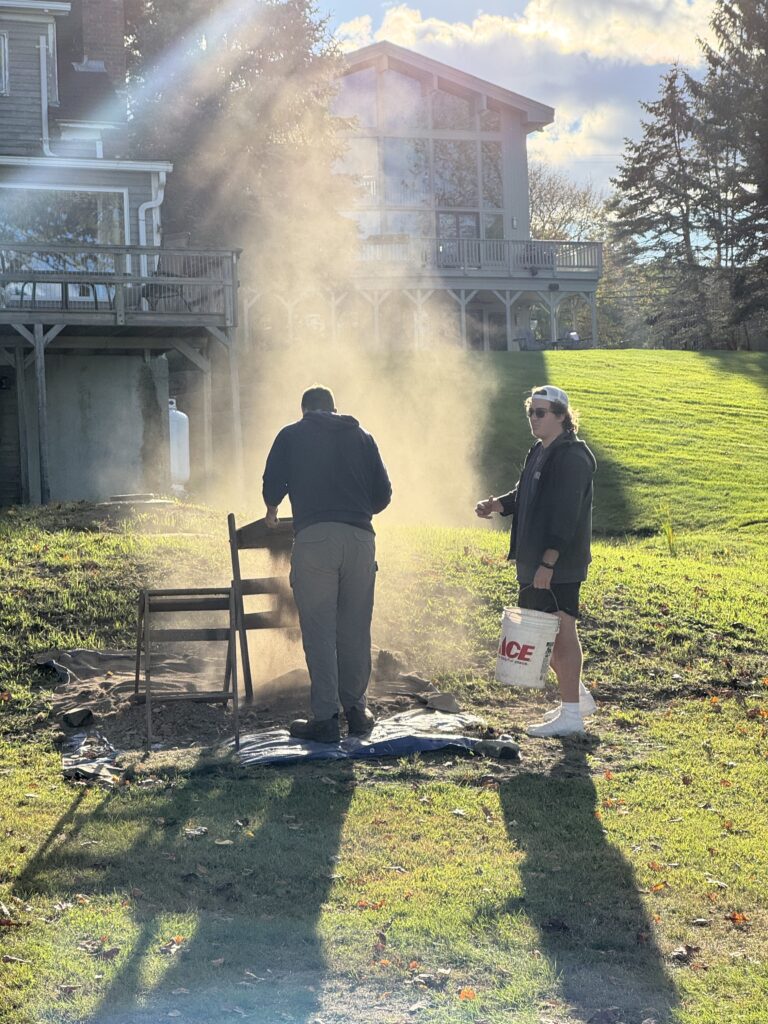
Everybody soon fell into their roles. We opened up three test pits. The first was directly in what we assume to be the center of the building. The second was located behind what we believe to be the building. The third was in front, on a steeply sloping downhill that leads off the rocks and into the water.
The finds came quickly. Bits of bottle glass in layer 2 of pit #1. Perhaps a spot of window glass. A fragment of white button. A whole white button, a bit smaller like you might find on a shirt collar. A .22 caliber bullet shell. There were also bits of very tightly packed soil clumped around smaller bits of rock. Could this be evidence of a dirt floor that was broken apart when the building was removed?
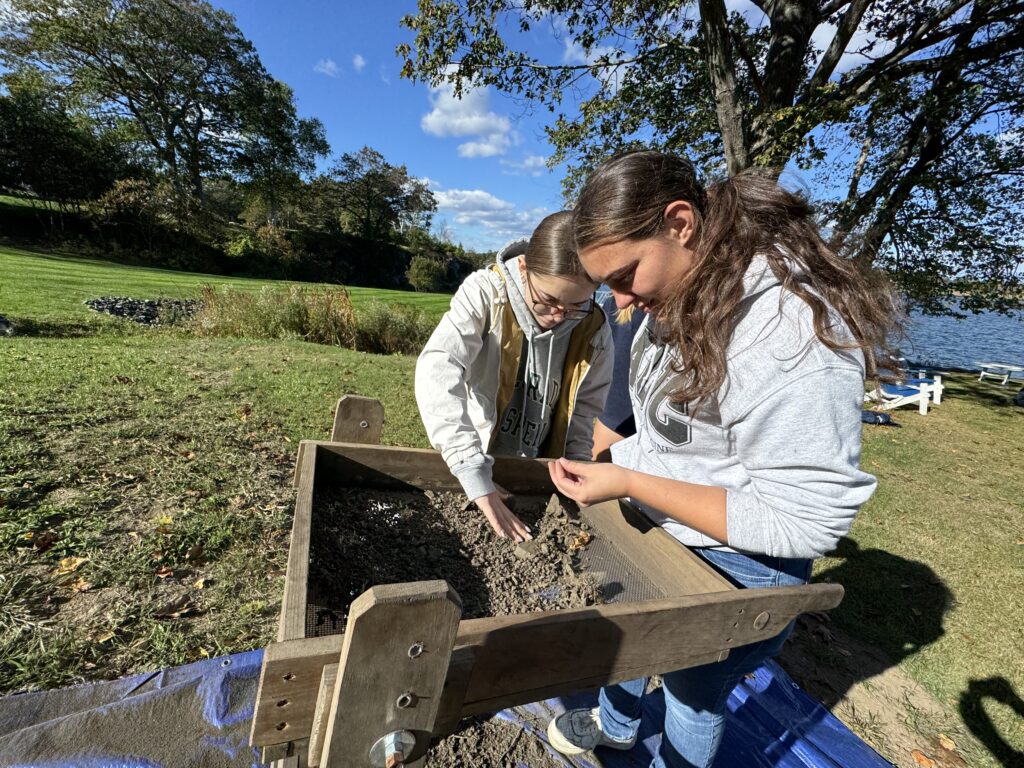
Finding something like the buttons always calls for some reflection. They don’t sound interesting, but when you pull them from the ground and think about the fact that at some stage they were likely worn by Nelson Norwood or a member of his family… they seem very personal. It’s hard not to feel a connection to the past.
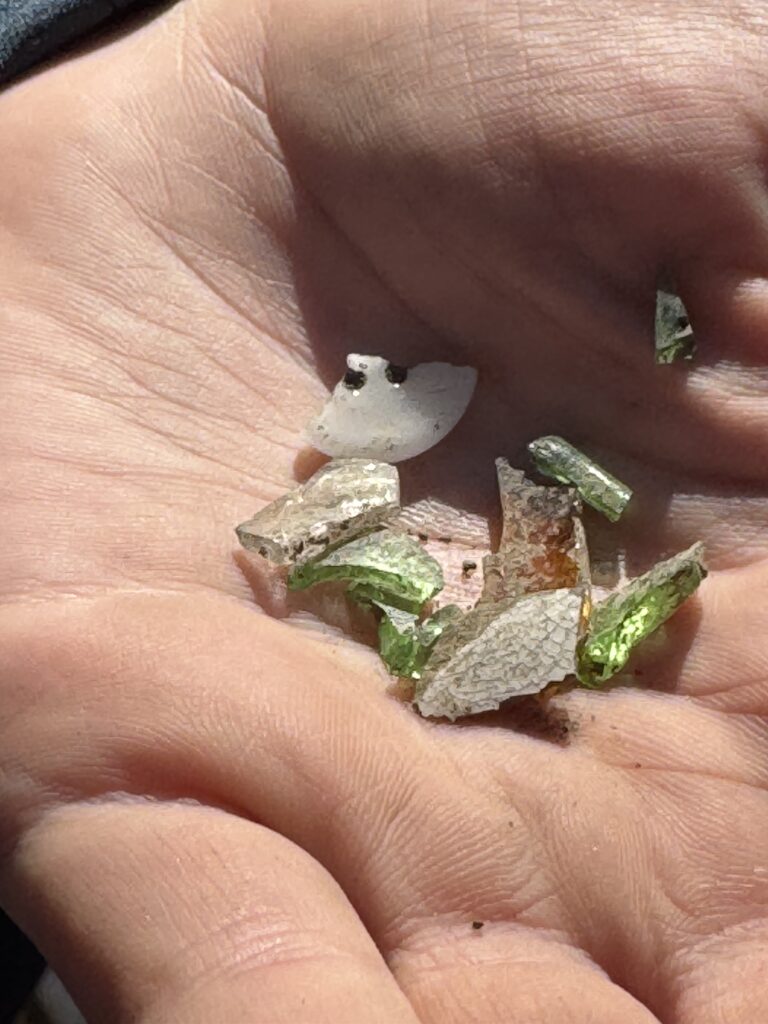
Things moved a little slower in pit #2. It was rockier and rough. But soon there were fragments of glass and another bullet shell. This group hit undisturbed and densely rocky soil quickly after that. End of the road.
In pit #3, the soil was less compacted and digging went fast and down deeper. Again, some bottle glass, a piece of brick, and another bullet shell. Six layers down, the group found what appeared to be undisturbed clay. The bottom.
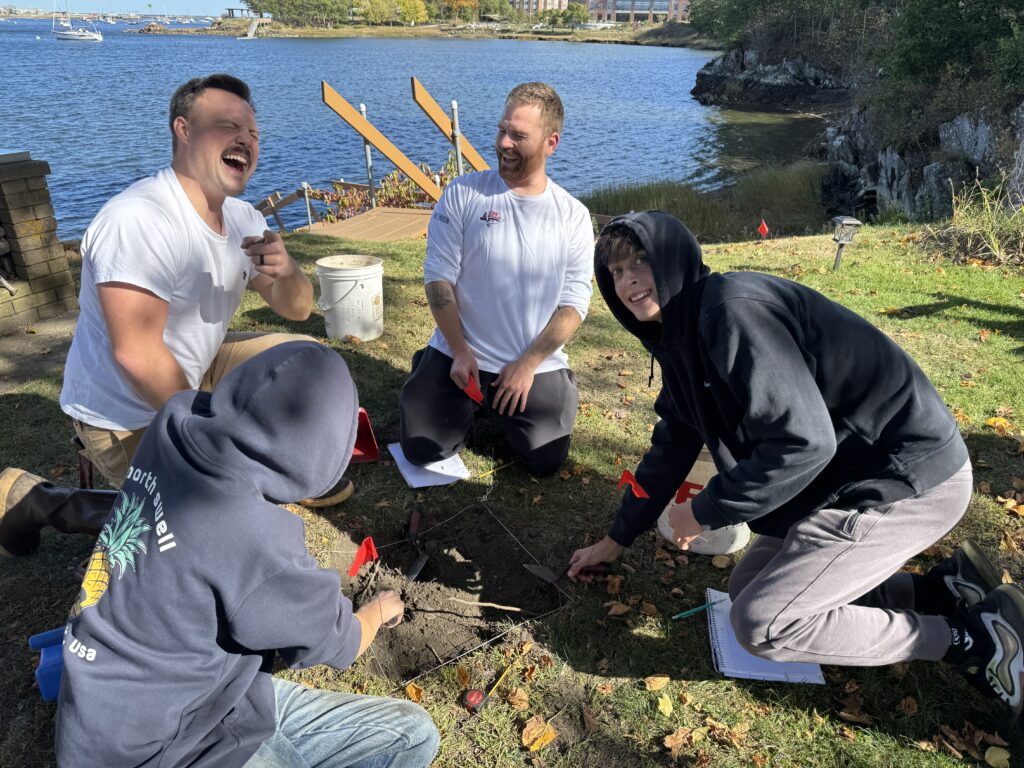
We did not find any foundations, but we did not expect to. Hopefully that will happen next week; If there is a foundation to find.
One of the big questions we were left with today is whether the structure actually had a dirt floor. It was likely a work building or a storage shed. There’s no particular reason to think that it would have had a paved or wooden floor. I guess we assumed that it would, but it is important not to make too many assumptions. We’ll continue to try to answer this question.
Most of the rest of our finds suggest an area where work was done. A square nail, glass from bottles used for refreshment after difficult labor.
The bullet shells were a bit more of a surprise. One of our students, Jamison Saunders, did some Googling. Could we date the shells? His initial on-site foray suggested a fairly wide date range, anywhere from just after the Civil War (which would match some of the ceramic we found on the beach) to the present.
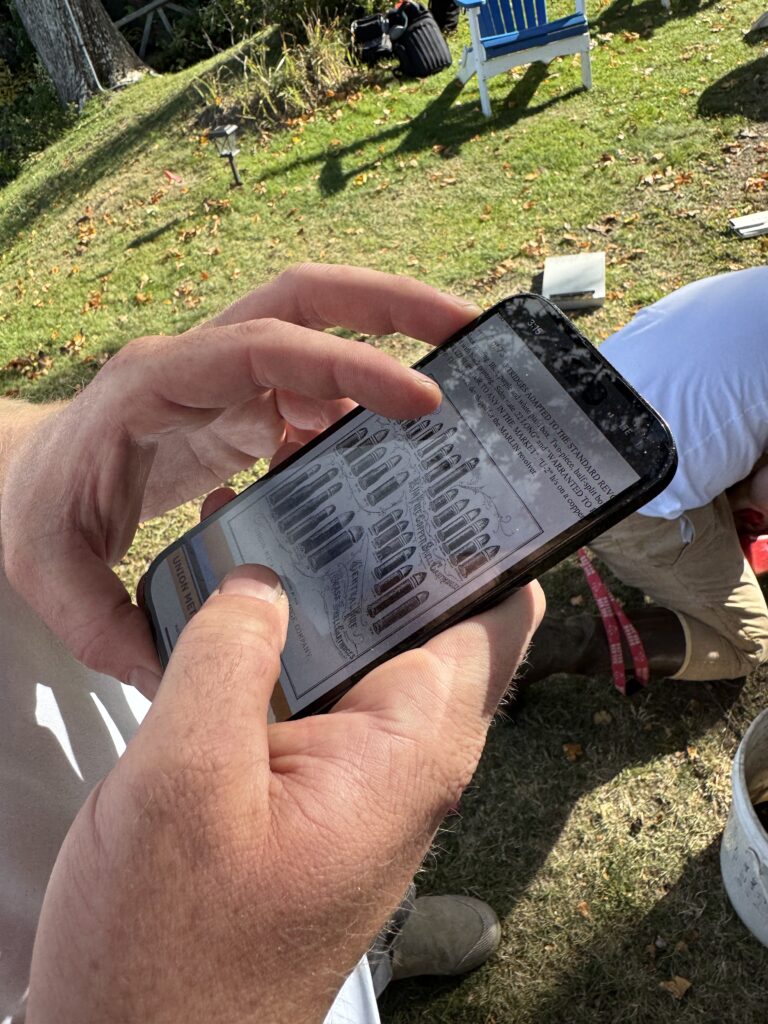
Arthur spent his evening cleaning the shells up a bit more and exploring the matter more deeply. They appear to be Winchester shells, manufactured in about 1912 by the Union Metallic Cartridge Co., just prior to a merger with Remington.
This is brilliant information to have. It helps us to date everything else found in that layer and it matches very neatly with the date of our postcard image. Hopefully a more thorough study of the glass will offer up a wider date range for our other finds that might help figure out when the wharf was built and when it went out of use. Fingers crossed.
Of course, the bullet shells raise other questions. What were the Norwoods firing at and why? Was it recreational? A bit of leisurely shooting into the river and in the direction of a major tourist destination at Camp Ellis!? Or, maybe the pier was such an active fishing site that gulls, seals, racoons, or other critters proved a costly annoyance and demanded control? Or, maybe they were shooting at bottles? That might explain the glass, but we didn’t find any actual bullets, just shells. Don’t know if we can solve this one, but it is interesting to contemplate.
Next week, our final opportunity to dig, we’re going to try to find the edges of the building, hopefully turning up a bit of foundation. Stay tuned.
- Prof. Eric G. E. Zuelow
